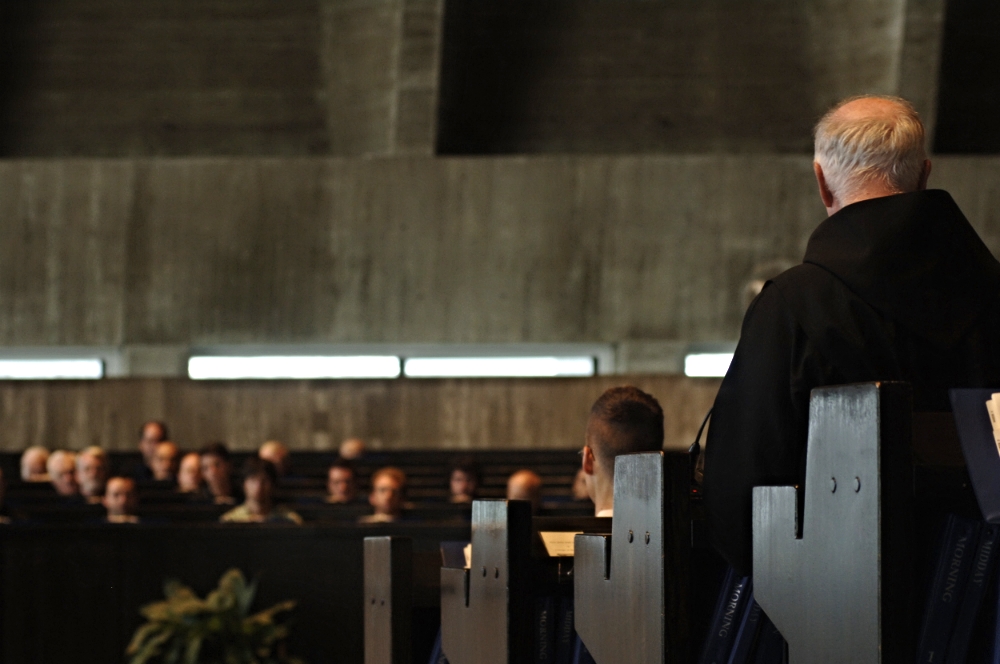Liturgy of the Hours
Benedictines often use the motto "Ora et Labora" to summarize Saint Benedict's monastic way of life. Translated the words mean "worship and labor," or "prayer and work." But still, the meaning is greater than the sum of its part. Together, intertwined, alternating back and forth every day from morning to night to ultimately form a union. The unity of prayer and work is a particular balance that sets Benedictines apart from other religious communities.
Significantly, Saint Benedict considers the community's prayer a kind of work in and of itself, a work so important that he calls it the Opus Dei, or the "Work of God." He devotes multiple chapters to it in his Rule, describing with great care how to carry out the day's work.
While Benedict did not invent the idea of praying in common, he took what Christians were already doing both in their homes and in their churches, and gave an order to it to fit the monastic need. There is evidence that it was an early Christian custom to pray, either privately or communally, at certain times of the day. Originally, the two major prayer times were the morning, commemorating the Resurrection of the Lord and blessing the coming day, and then in the evening to give thanks for the blessings that the day has brought. Later, mid-morning, noon, mid-afternoon, and night came to be added, especially in religious communities, dedicating every part of the day to the praise of the Creator. Because of this hallowing of time, we call this prayer form the Liturgy of the Hours.
At Saint John's we gather for Morning Prayer (7:00 a.m.), Mid-Day Prayer (noon), and Evening Prayer (7:00 p.m.), as well as daily Eucharist (5:00 p.m.). The schedule is the same every weekday and is adjusted somewhat on weekends (see Vocation Guest's Schedule).
The Psalms
At the core of the Liturgy of the Hours are the Psalms. The Psalms are 150 prayers, central to the prayer life of the Jewish people, collected into one book of the Old Testament. Initially attributed to King David, we know now that David was not the author of the entire collection, though some psalms are attributed directly to him, such as Psalm 23, as a "Song of David." The early Christians, many of whom were Jewish and accustomed to praying the Psalter (the book of Psalms), saw Christ prefigured there. Thus, Christ became the Good Shepherd; the Passover Lamb slaughtered to redeem His people; Christ who led his followers from death to life by His death on the Cross and His Resurrection to new life.
Praying with the Community
As a vocation guest, when you pray with the monastic community, you will join the newer members of the community in the front of the monastic choir, with the senior members filling in the choir stalls behind you. One of the monks sitting near you will help you feel comfortable and become proficient using the prayer books. After the first day, you likely will be very comfortable navigating the Liturgy of the Hours at Saint John's.
Learning to pray with the monks also includes learning the slow and deliberate pace followed in both spoken and chanted psalms at Saint John's. Prayer is nothing to rush through or to treat as a chore to get out of the way. The monastic tradition of slow pacing and periods of silence between psalms, readings, and hymns allows for reflection and patient listening to God. It may seem awkward, or even difficult to sit in quiet meditation. This challenge to patience and listening is only overcome with prayerful practice and persistence, but will quickly become intuitive and natural even to private prayer.
